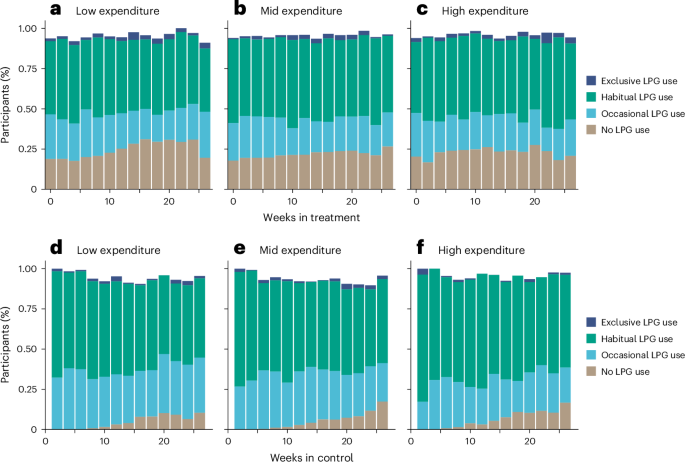Leveraging AI for Transforming Patient Care and Enhancing Clinician Experience in EMRs
As healthcare pushes forward in digital transformation, AI has emerged as a critical tool in optimizing electronic medical records. EMRs remain both vital and frustrating. Clinicians wrestle with usability, while patients struggle with engagement and access. By integrating AI thoughtfully and securely, we can create a more intuitive, efficient and user-centric experience for both groups. The post Leveraging AI for Transforming Patient Care and Enhancing Clinician Experience in EMRs appeared first on MedTech Intelligence.

MTI Viewpoints
Insights shared by industry relative to healthcare and the advancement of medical technology.

Josh Sol is Managing Director, Digital Health and Innovation at FTI Consulting. This MTI Viewpoint is from his LinkedIn post From the Desk of Josh Sol.
I remember sitting with a group of clinicians after implementing Epic, listening to their frustration with electronic medical record (EMR) documentation. The frustration was palpable. “I didn’t go to medical school to spend hours clicking boxes,” one physician remarked. His sentiment was echoed across the room — clinicians venting about the administrative burden that had become an unavoidable part of their day.
Now, after three years in consulting, I hear the same frustrations repeated across countless healthcare systems. Many of you have lived through an EMR implementation, whether as a user or an implementer, and we all have war stories that somehow sound better over a drink or two.
But in the last few years, something has shifted. Recently, I caught up with an old friend, a surgeon, who shared a fresh perspective on the role of AI in clinical documentation. Like many, he once viewed the EMR as a burden. Now, he’s found a way to turn it into an asset. He even coined a term — at least, new to me — for his documentation time: “Netflix and Notes.” Brilliant, right?
He explained how AI allows him to be more empathetic, faster. Instead of firing off a rushed patient portal response, he uses AI to craft thoughtful, compassionate messages — without adding to his workload. That simple shift has transformed his patient relationships.
I’m also seeing more clinicians adopt ambient listening technology, enabling them to document notes effortlessly while maintaining eye contact with patients. Ideally, this passive listening enhances patient connections and streamlines documentation. And while this is already a game-changer, it’s also the most clunky this experience will ever be. As technology evolves, AI should go beyond passive listening; it should incorporate active listening to place orders and referrals in real time. The missing piece? Automated coding that could finally ease the documentation burden physicians have long struggled with.
We’re at the tipping point of something big. AI isn’t just smoothing out documentation, it’s redefining the way clinicians engage with their patients. If we get it right, we’ll finally turn the EMR from an administrative headache into a tool that truly works for clinicians.
AI is A Critical Lever in EMR Optimization
As healthcare pushes forward in digital transformation, AI has emerged as a critical tool in optimizing electronic medical records. EMRs remain both vital and frustrating. Clinicians wrestle with usability, while patients struggle with engagement and access. By integrating AI thoughtfully and securely, we can create a more intuitive, efficient and user-centric experience for both groups.
Addressing EMR Pain Points with AI
Despite ongoing improvements, EMRs still pose significant usability challenges. Clinicians spend excessive time on data entry, leading to burnout and decreased face-to-face patient interaction. Meanwhile, patients remain locked out of their own health data. In a world where everything else is instantly accessible, this siloed reality feels outdated. Encouragingly, recent large-scale efforts like those by The Permanente Medical Group—where ambient AI scribes were deployed across 10,000 physicians and staff—demonstrate that it’s possible to reduce documentation burden and reclaim time for patient care, all without sacrificing clinical quality or compliance.¹
AI can change this narrative by:
1. Reducing administrative burden
AI-driven documentation tools, like ambient listening and natural language processing (NLP), can capture clinical conversations and auto-generate structured notes. AI-assisted documentation tools, such as ambient listening and natural language processing, have been shown to significantly reduce the time physicians spend on administrative tasks, thereby alleviating burnout and enhancing efficiency. ²
2. Enhancing clinical decision support
Advanced AI algorithms can provide real-time, evidence-based recommendations such as flagging medication interactions, suggesting diagnostic tests and incorporating social determinants of health (SDOH) for a more holistic clinical view.³
3. Streamlining workflows
Predictive analytics can anticipate a clinician’s next steps, suggesting order sets based on historical data. Imagine an EMR that delivers the right information exactly when needed, eliminating endless scrolling.
4. Personalizing patient engagement
AI-powered patient portals can deliver tailored education, automated follow-ups and virtual health assistants. This also benefits clinicians, enabling smarter triage and response strategies.
5. Restoring empathy to medicine
By reducing repetitive tasks, AI allows clinicians to focus on human connections. Studies suggest that AI-driven tools can improve patient trust and satisfaction by enhancing provider responsiveness and empathy.⁴
6. Creating a more holistic patient view
AI can synthesize electronic health record (EHR) data, external records and SDOH insights into a comprehensive patient profile. This allows for more personalized care and improved health outcomes.
Real-World Impact and AI-Driven Opportunities
When AI is implemented strategically, it fundamentally transforms the clinician and patient experience. Imagine an EMR that acts as a true assistant, automating routine tasks, enhancing decision-making, and making health information more accessible.
In my experience supporting healthcare organizations with EMR and AI initiatives, a few key focus areas consistently drive impact:
- Strategic AI Integration – embedding AI where it enhances efficiency without disrupting clinical workflows.
- User-Centric EMR Redesign – applying human-centered design principles to improve usability and engagement.
- Advanced Data Analytics – using AI-powered insights to drive better outcomes and support value-based care.
- Governance and Compliance – ensuring AI models align with regulatory standards and mitigate bias.
These are foundational to building EMRs that clinicians actually want to use, and that patients benefit from.
Moving Forward with AI as a Collaborative Tool
To maximize AI’s potential in EMRs, we must prioritize user-centered design, interoperability and strong data governance. True innovation happens at the intersection of technology and human experience. By fostering collaboration between clinicians, technologists and patients, we can develop AI solutions that are not only advanced, but deeply human.
The future of healthcare isn’t just about more data, it’s about using that data intelligently. As AI evolves, we must stay focused on its core mission: empowering clinicians to provide compassionate, efficient care while enabling patients to take control of their health journeys.
I’d love to hear your thoughts. How do you see AI transforming patient care and the clinician experience in EMRs? Let’s start the conversation.
CITED LINKS:
1 Richard S. Isaacs, Jason D. Jones, Gabriela P. Mejia, et al., “Ambient Artificial Intelligence Scribes to Alleviate the Burden of Clinical Documentation,” NEJM Catalyst (October 2023), https://catalyst.nejm.org/doi/10.1056/CAT.23.0404.
2 Tanuj Gupta, Vineet Arora, Vivian S. Lee, et al., “How AI in the Exam Room Could Reduce Physician Burnout,” Harvard Business Review (November 2019), https://hbr.org/2019/11/how-ai-in-the-exam-room-could-reduce-physician-burnout.
3 John W. Ayers, Adam Poliak, Mark Dredze, et al, “Comparing Physician and Artificial Intelligence Chatbot Responses to Patient Questions Posted to a Public Social Media Forum,” JAMA Intern Med (April 2023), https://www.nejm.org/doi/full/10.1056/NEJMoa2106761.
4 Alina S. Schnake-Mahl and Benjamin D. Sommers, “Places and the Pandemic—Barriers and Opportunities to Address Geographic Inequity,” JAMA Forum (September 2020), https://jamanetwork.com/journals/jama/fullarticle/2770685.
The post Leveraging AI for Transforming Patient Care and Enhancing Clinician Experience in EMRs appeared first on MedTech Intelligence.























































































































































